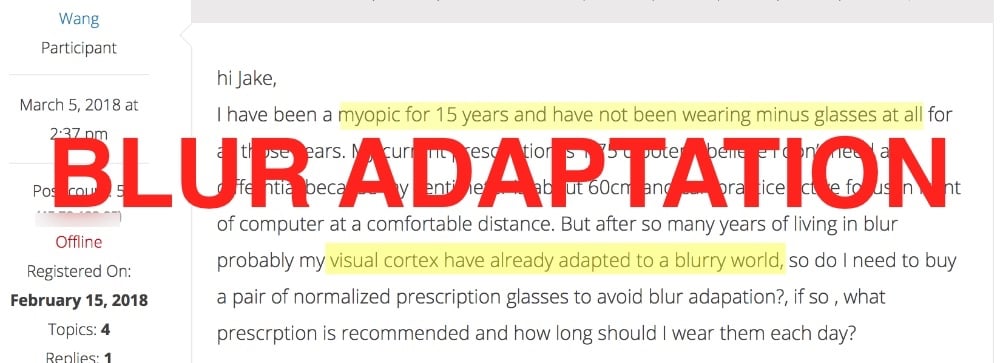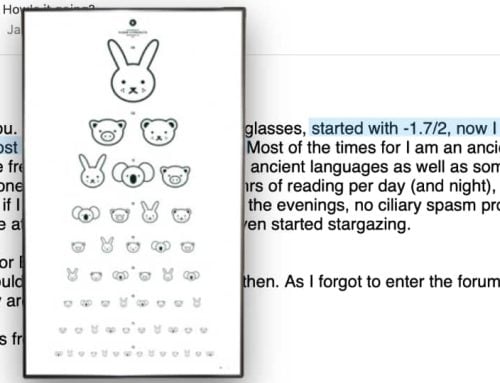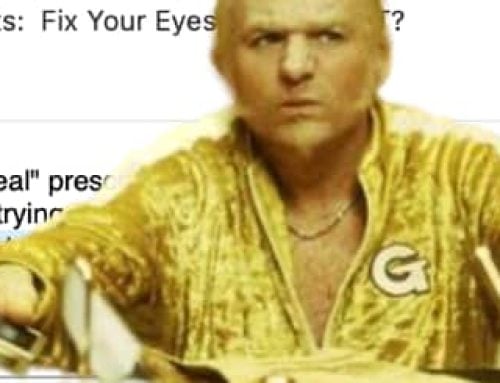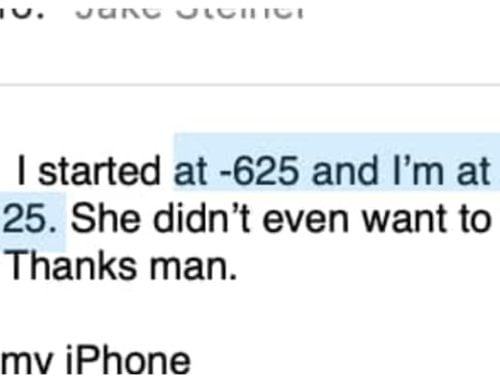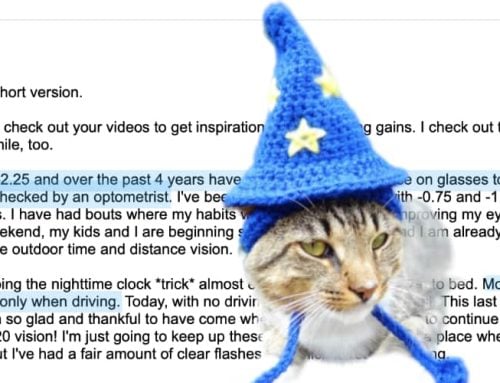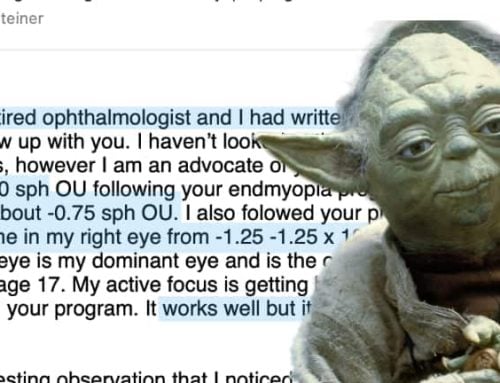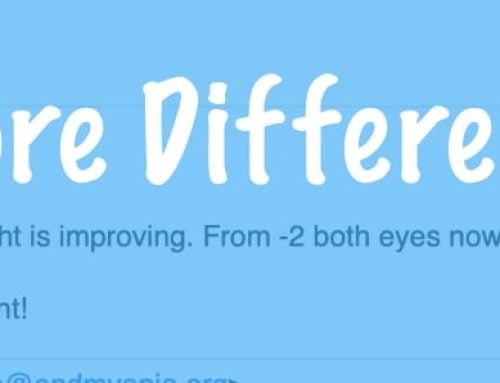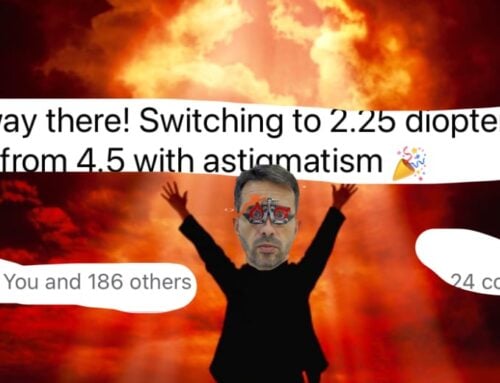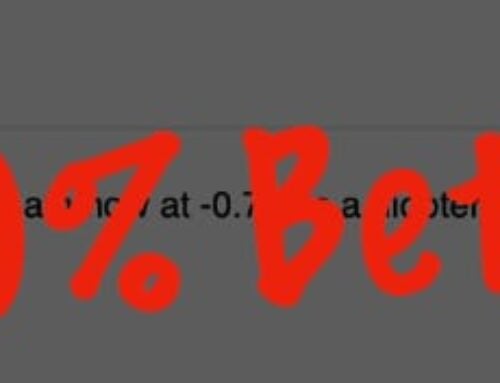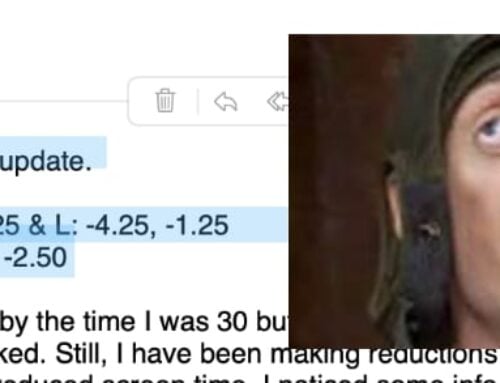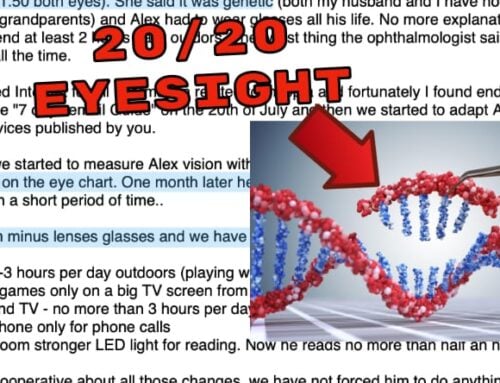Pro topic.
Heads Up: Future “pro topic” videos will only be available in the Le Meow forum. The forum is free to join, but requires some basic knowledge about endmyopia. Answer the join questions here.
You may have low myopia (below 2 diopters) and simply never started wearing glasses. While in principle this is a smart move towards protecting your distance vision from lens-induced myopia, it doesn’t alone address your existing myopia degree.
It also creates an issue of habituated blur, something you’ll have to address before being able to make meaningful progress in eliminating the low degree myopia.
A question on this topic from the BackTo20/20 support forum:

Smart self assessment.
Here’s what I suggested to Wang on this topic:
Yes, no glasses for close-up.
Blur adaptation / active focus / habituated low grade myopia is a very tricky thing. On one hand you do want you reset your visual cortex to a very clear image, to help build the (near) subconscious habit of clearing up blur throughout the day. So a minus lens to correct you to at least a usable blur horizon could be very helpful (about 20/40 or so would be ok if you already have close-up active focus well figured out).
On the other hand there is always some risk of myopia increase if you’re not careful with minus use. The focal plane change can cause refractive state change in your eyes – which of course is reversible but still a potential slide.
Saying this so you know what to look for. You may opt for low minus (-1.25 or so) and just use them in poor lighting / evening outdoor walks, for example. The less light you have the more focal plane error will be noticeable (more blur), so by doing it this way you somewhat minimize the risk of increasing myopia. If you live somewhere with good evening walk opportunity (street signs, car license plates, etc), you might practice the walk without glasses and active focus first, then re-do the same walk with minus. You’ll likely notice your uncorrected vision appearing worse after wearing the minus. Caution is important here, with just a little minus use, and seeing whether you can get more active focus habit and clear vision, without decreased centimeter or Snellen results. You want to use them basically just to set the bar for clear vision, show yourself what the result of active focus should be. And then definitely get daytime active focus walks in without glasses, look for changes there as well – you should get more double vision, clear flash moments, in general more fluctuations towards clearer vision. All this may take a few weeks, do it all gradually and slowly.
Keep track of Snellen and centimeter and be conscious of changes there. Do above only if you already have good close-up active focus habits.
For a start that’ll do.
Key is balancing the removal of blur adaptation with the risk for lens-induced myopia increase. Limiting your initial lens use to situations with the largest blur horizon (poor lighting), or when faced with the challenge of moving objects is a good way to begin exploring that balance.
Update: There’s now the video version of this guide available on the endmyopia Youtube channel.
Quite footnote here, since I usually get a million e-mails every time I post one of these guides:
Note that I don’t offer free case-specific support via e-mail. I get thousands of e-mails and while I offer my time for free when it benefits a large audience over a long period of time (ie. writing here), I’m not support-monkey for every plzz-bro who expects me to work for them for free. This whole site is all strictly a DIY project guide, your darling eye guru is already putting plenty of time and resources into it for everyone. If you’re looking for my specific suggestions like here in Wang’s case, do find me in the BackTo20/20 support forum.
Cheers,
-Jake

